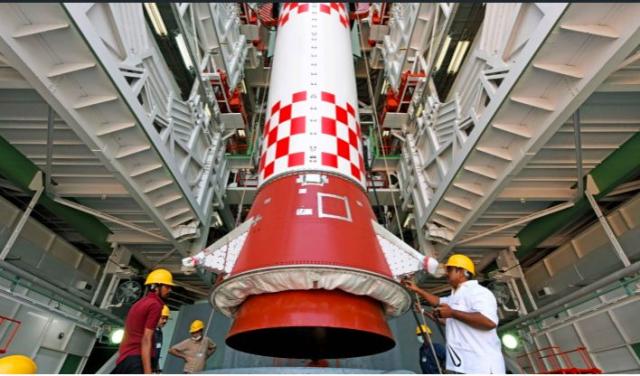The maiden mission of India’s brand new rocket about Rs 56 crore Small Satellite Launch Vehicle (SSLV) on Sunday morning ended in a failure.
India earlier said its rocket Small Satellite Launch Vehicle (SSLV-D1) on Sunday lifted off with an earth observation satellite-02 (EOS-02) formerly known as Microsatellite-2 weighing about 145 kg.

The launch failure of a small rocket powered by solid fuel puts the focus on the safety of India’s human space mission that will be carried out by Geosynchronous Satellite Launch Vehicle-Mk III (GSLV-Mk III) with the tricky cryogenic engine stage.
Hours after the SSLV-D1 was launched with two satellites at about 9.18 a.m., the Indian Space Research Organisation (ISRO) said satellites are unusable as they were put into a different orbit than the intended one.
“All the stages performed normally. Both the satellites were injected. But the orbit achieved was less than expected, which makes it unstable,” ISRO said in a very brief statement about the mission.
“SSLV-D1 placed the satellites into 356 km x 76 km elliptical orbit instead of 356 km circular orbit. Satellites are no longer usable. Issue is reasonably identified,” ISRO said.
“Failure of a logic to identify a sensor failure and go for a salvage action caused the deviation. A committee would analyse and recommend. With the implementation of the recommendations, ISRO will come back soon with SSLV-D2,” the space agency added.
The Indian space agency is silent on the reasons as to why the satellites or at least the EOS-02 could not be raised to the required orbit by firing its onboard motors.
At about 9.18 a.m. the 34 meter tall and 120 ton rocket broke free of the first launch pad and started its maiden upward one way journey carrying the two satellites, IANS news agency reported.
Just over 12 minutes into its flight, the SSLV-D1 will put into orbit the EOS-2 satellite and a few seconds later the AZAADSAT will be orbited.
According to the ISRO, the SSLV is a ready to transfer rocket with modular and unified systems with standard interfaces for production by the industry.
The SSLV design drivers are low cost, low turnaround time, flexibility in accommodating multiple satellites, launch-on-demand feasibility, minimal launch infrastructure requirements and others, ISRO said.
The commercial arm of ISRO, NewSpace India plans to transfer the SSLV technology for production in the private sector.
The Indian space agency said the EOS-02 satellite is an experimental optical imaging satellite with high spatial resolution. The objective is to realize and fly an experimental imaging satellite with short turnaround time and showcase launch on demand capability.
The new technologies realized for the Microsat series of spacecrafts include payloads with a common fore optics and metallic primary mirror realized with the limited mass and volume of Microsat Bus, ISRO said.
ISRO will have three rockets — Polar Satellite Launch Vehicle (PSLV) and its variants (cost about Rs 200 crore), Geosynchronous Satellite Launch Vehicle (GSLV-MkII cost about Rs 272 crore and Mk III Rs 434 crore) and SSLV (Development cost of three rockets about Rs 56 crore each) and production cost may go down later.
“From 75 government schools for girls, we have selected 10 students to give this opportunity. The selected students are predominantly from Classes 8-12. This is a first of its kind Space mission with an All women concept to promote women in STEM as this year’s UN theme is Women in Space,” SpaceKidz India said.
Niti Aayog has partnered for this project to bring this opportunity to students. Hexaware is supporting by funding the project.





